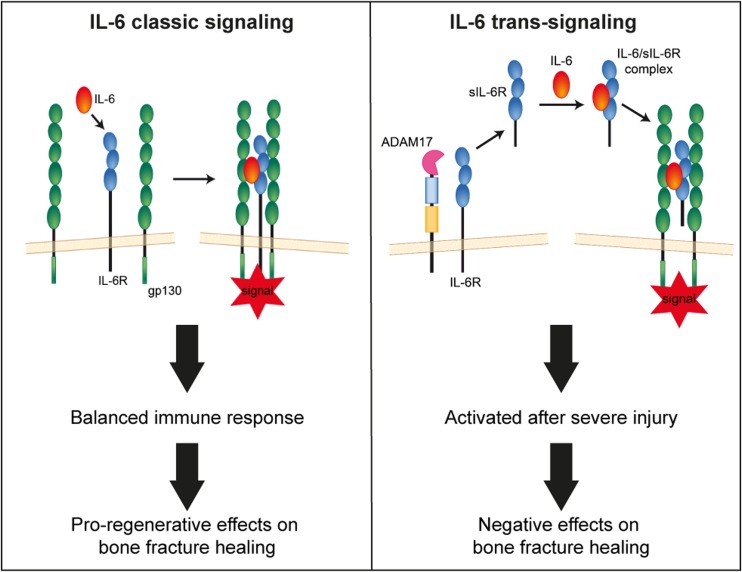Fig. 7.
Scheme of IL-6 classic and trans-signaling and the proposed effects of fracture healing. In IL-6 classic signaling, IL-6 binds to its membrane-bound receptor (IL-6R), which then binds to a dimer of transmembrane glycoprotein 130 (gp130), inducing intracellular signal transduction. In IL-6 trans-signaling, IL-6 binds to its soluble receptor (sIL-6R), which is mainly shed by A Disintegrin and Metalloproteinase 17 (ADAM 17). The IL-6/sIL-6r complex then binds to the gp130 dimer. Our previous (Prystaz et al. 2017) and present results indicate that IL-6 classic signaling induces a balanced immune response and pro-regenerative effects on bone repair. In contrast, IL-6 trans-signaling, which is induced after severe injury, negatively affects fracture healing

